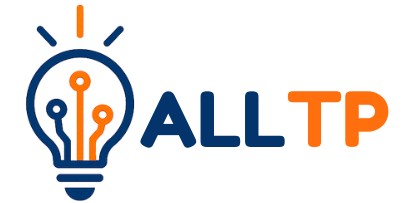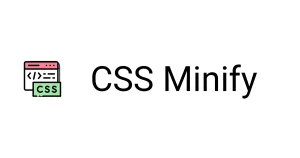In today’s digital world, coding has become a fundamental skill for children, much like reading, writing, or math. It teaches problem-solving, creativity, and logical thinking skills that are valuable in nearly every career, not just technology. As more jobs and industries rely on digital tools, giving kids a head start in coding prepares them to thrive in a future shaped by innovation.
You don’t need a computer to get started with coding for kids. Even without a screen, children can begin exploring programming basics through fun, hands-on activities.
In Kenya, we believe every child deserves the opportunity to learn how to code, regardless of location or resources. Ready to spark your child’s curiosity? Try our screen-free activities or enroll in our beginner-friendly programs designed to make coding fun and accessible for all. Start today and nurture tomorrow’s innovators!
In Kenya, where some communities still lack consistent access to digital infrastructure, it’s essential to explore offline coding activities. These screen-free methods not only make coding more inclusive but also encourage creativity, teamwork, and critical thinking using resources already available at home or in classrooms.
Why Offline Coding Matters in Kenya
In many parts of Kenya, especially in rural or underserved areas, children face significant barriers to accessing technology. Internet connectivity may be unreliable or unavailable, and digital devices like laptops or tablets are often shared or completely out of reach. These access gaps can limit a child’s exposure to coding and other digital skills that are becoming essential in the modern world.
Offline coding activities provide a powerful solution by removing the need for expensive technology or constant internet access. They open up opportunities for all children, regardless of their background, to learn foundational programming concepts in a fun and practical way. By using simple materials like paper, beads, or everyday objects, kids can explore logic, problem-solving, and creative thinking without a screen.
Offline learning also aligns well with the goals of Kenya’s Competency-Based Curriculum (CBC), which emphasizes critical thinking, collaboration, and hands-on learning. Coding without a computer fits naturally into CBC’s learner-centered approach, helping children build real-world skills in engaging, interactive ways. This makes offline coding not only a practical alternative but also a meaningful part of holistic education in Kenya.
Top Offline Coding Activities for Kids
Even without a screen, kids can learn powerful coding concepts through hands-on, playful activities. Supporting the broader Coding Kenya movement means embracing creative, offline ways to teach programming across all regions. Below are some of the most effective and engaging screen-free coding exercises, especially suited for children in Kenya:
A. Unplugged Algorithms with Everyday Tasks
One of the easiest ways to introduce children to coding is through daily routines. Tasks like brushing teeth, making tea, or getting dressed can be broken down into step-by-step instructions, just like an algorithm. For example, brushing teeth might include steps like: “Pick up toothbrush,” “Open toothpaste,” “Squeeze onto brush,” and so on. Using Kiswahili or local languages to explain these steps makes the concept more relatable and fun. This activity helps children understand sequencing and the importance of giving clear, logical instructions.
B. Coding Board Games
Board games that involve logic and decision-making are fantastic for teaching coding skills. Games like Robot Turtles and Code Master are great examples, but children in Kenya can also create DIY versions using cardboard, bottle caps, or local materials. These games often teach direction commands, conditional logic, and planning skills that directly relate to programming.
C. Paper Programming
In this activity, kids “write code” using arrows and commands drawn on paper. It’s perfect for learning about sequences, loops, and conditionals. A common activity is “Give the Robot Instructions to Cross the Room,” where one child writes down steps like “move forward,” “turn left,” or “repeat 3 times,” and another follows them. This playful setup mirrors how programmers give precise instructions to computers.
D. Human Robot Game
In this fun and interactive game, one child acts as the “programmer” and gives commands, while another plays the role of the “robot” and follows the directions exactly. If the robot does something unexpected, the programmer has to “debug” the instructions. This game sharpens logical thinking and shows the importance of precision in coding.
E. Bead Patterns and Binary Bracelets
Introducing binary code can be made simple and colorful using beads. Kids can create bracelets using two colored beads to represent 0s and 1s. For example, red = 1 and white = 0. Children can encode their initials or numbers into binary, turning a tech concept into an art project. This is especially appealing for younger learners and those who love crafts.
F. Coding with Dance or Song
Turn coding into movement! Children can design dance routines based on basic coding instructions like “move forward,” “jump,” “spin,” or “repeat.” Using music or cultural dance styles makes it even more engaging. This activity promotes active learning and is excellent for kinesthetic learners who understand better through physical activity.
G. Story-Based Logic Puzzles
Children love stories, and adding coding logic into storytelling makes it even better. With story cards or picture prompts, kids can choose what happens next based on conditions (e.g., “If the monster is asleep, tiptoe. Else, run away.”). This introduces if-else logic and helps them visualize how decisions affect outcomes, much like in interactive games or apps.
Tips for Parents and Educators
You don’t need expensive gadgets or advanced training to teach kids the basics of coding. With a little creativity and encouragement, any adult can help children explore programming in a fun, meaningful way. Here are some practical tips to get started:
- Start with what you have. You don’t need computers or tablets; simple items like paper, markers, bottle tops, string, or a chalkboard can be powerful tools for teaching coding concepts. Everyday environments offer countless learning opportunities.
- Use local languages. Explaining coding concepts in Kiswahili or mother tongue languages makes them easier for children to grasp. Relating terms like “loop,” “sequence,” or “bug” to familiar words helps bridge the gap between abstract ideas and real-world understanding.
- Encourage group collaboration and role-play. Learning is more fun when shared. Let kids work in pairs or small groups to “debug” each other’s instructions, act out code as robots, or build story-based logic games. These interactions boost communication, teamwork, and creative thinking.
- Keep sessions short and fun. Children learn best when they’re enjoying themselves. Plan short, energetic activities, 15 to 30 minutes is enough for most age groups. End with praise, high-fives, or small rewards to keep their enthusiasm high.
Where to Find Resources in Kenya
Even without internet access at home, there are many places across Kenya where parents and educators can find support for teaching coding, especially through offline and unplugged activities:
- Local libraries and community centers: Many public libraries and youth centers are beginning to offer coding clubs or digital literacy sessions for children. These hubs often provide free or low-cost access to learning materials and shared resources.
- NGOs promoting digital literacy: Organizations like Kids Comp Camp and Tunapanda Institute have been instrumental in bringing coding education to underserved communities in Kenya. They run programs that introduce coding through fun, hands-on, and often unplugged activities, ideal for children in both urban and rural settings.
- Government initiatives: The Kenyan government’s Ajira Digital Program has extended some of its materials to schools and clubs through the Ajira Digital Club, encouraging digital skill-building from an early age. While originally aimed at older youth, these resources are increasingly being adapted to younger audiences.
- Free printable unplugged coding curricula: Platforms like CS Unplugged offer downloadable lesson plans, games, and activities that teach programming concepts without a computer. These can be printed and used in classrooms, homes, or community workshops.
Whether you’re in Nairobi, Kisumu, or a village in Turkana, there are growing opportunities to support coding for kids, without needing expensive tools or constant internet. It’s all about knowing where to look and being open to creative approaches.
Conclusion
Offline coding is fun, educational, and accessible, no screen required! It proves that learning to program isn’t limited to high-tech environments or expensive devices. With just a bit of creativity and the right approach, children can begin to grasp powerful coding concepts through play, movement, stories, and hands-on challenges.
Every child in Kenya, whether in a city or a rural village, deserves the chance to become a creator, not just a consumer of technology. With the guidance of parents, teachers, and community leaders, these young learners can develop the problem-solving and critical thinking skills needed to thrive in a digital future.
The journey doesn’t have to start big. Begin with simple activities at home or school, use local materials, and most importantly, have fun learning together. These small steps can spark a lifelong interest in technology and innovation.
Ready to take the next step? Explore our Coding for Beginners resources at our Bootcamp and help your child or students start their journey today. Whether offline or online, let’s empower every Kenyan learner to unlock their potential through code.




